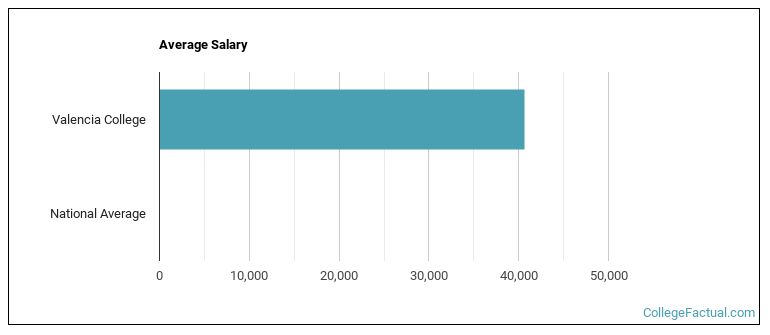 by our College Data Analytics Team
by our College Data Analytics Team
College Factual recognizes the best colleges and universities in its annual rankings. These rankings include categories for best overall colleges, best colleges for each major, best value schools, and much more.
Valencia College was awarded 125 badges in the 2025 rankings. The highest ranked major at the school is nursing.
Explore the best ranked schools for the programs you are most interested in.
Valencia College is ranked #130 out of 2,152 schools in the nation for overall quality on College Factual's 2025 Best Colleges list. This puts it in the top 10% of all schools in the nation. This is an improvement over the previous year, when Valencia College held the #523 spot on the Best Overall Colleges list.
Valencia College also holds the #4 spot on the Best Colleges in Florida ranking.
As long as you meet basic requirements, you should not have any trouble getting into Valencia College since the school has an open admissions policy. Still, be sure to submit any requested materials and that your application is completed in full.
The student to faculty ratio at Valencia College is 23 to 1, which is high when compared to the national average of 15 to 1. This may indicate that some of your classes will be larger in size than they would be at other schools. However, upper level classes will probably be smaller.
In addition to the student to faculty ratio, some people look at what percentage of faculty members are full-time as a sign of how much time professors will be able to spend with their students. This is because part-time teachers may not be be on campus as much as their full-time counterparts.
The full-time faculty percentage at Valencia College is 32%. This is lower than the national average of 47%.
During the 2017-2018 academic year, there were 45,949 undergraduates at Valencia College with 16,488 being full-time and 29,461 being part-time.
| $0-30 K | $30K-48K | $48-75 | $75-110K | $110K + |
|---|---|---|---|---|
| $10,801 | $10,914 | $12,534 | $12,953 | $8,105 |
The net price is calculated by adding tuition, room, board and other costs and subtracting financial aid.Note that the net price is typically less than the published for a school. For more information on the sticker price of Valencia College, see our tuition and fees and room and board pages.
Almost 66% of college students who graduated with the class of 2018 took out student loans, but that percentage varies from school to school. At Valencia College, approximately 19% of students took out student loans averaging $5,116 a year. That adds up to $20,464 over four years for those students.

Get more details about the location of Valencia College.

Contact details for Valencia College are given below.
| Contact Details | |
|---|---|
| Address: | 1800 S Kirkman Road, Orlando, FL 32811 |
| Phone: | 407-299-5000 |
| Website: | valenciacollege.edu/ |
| Most Popular Majors | Bachelor’s Degrees | Average Salary of Graduates |
|---|---|---|
| Liberal Arts General Studies | 7,147 | NA |
| Entrepreneurial Studies | 556 | NA |
| Culinary Arts | 467 | NA |
| Allied Health Professions | 421 | $68,564 |
| Criminal Justice & Corrections | 391 | NA |
| Nursing | 365 | $93,751 |
| Information Technology | 326 | NA |
| Computer Programming | 318 | NA |
| Computer Software & Applications | 315 | NA |
| Hospitality Management | 247 | NA |
Online learning options are becoming more and more popular at American colleges and universities. Online classes are great for students who have busy schedules or for those who just want to study on their own time.
In 2022-2023, 32,897 students took at least one online class at Valencia College. This is a decrease from the 36,576 students who took online classes the previous year.
| Year | Took at Least One Online Class | Took All Classes Online |
|---|---|---|
| 2022-2023 | 32,897 | 20,637 |
| 2021-2022 | 36,576 | 26,377 |
| 2020-2021 | 43,996 | 41,206 |
| 2018-2019 | 20,305 | 7,987 |
Footnotes
*The racial-ethnic minorities count is calculated by taking the total number of students and subtracting white students, international students, and students whose race/ethnicity was unknown. This number is then divided by the total number of students at the school to obtain the racial-ethnic minorities percentage.
References
More about our data sources and methodologies.